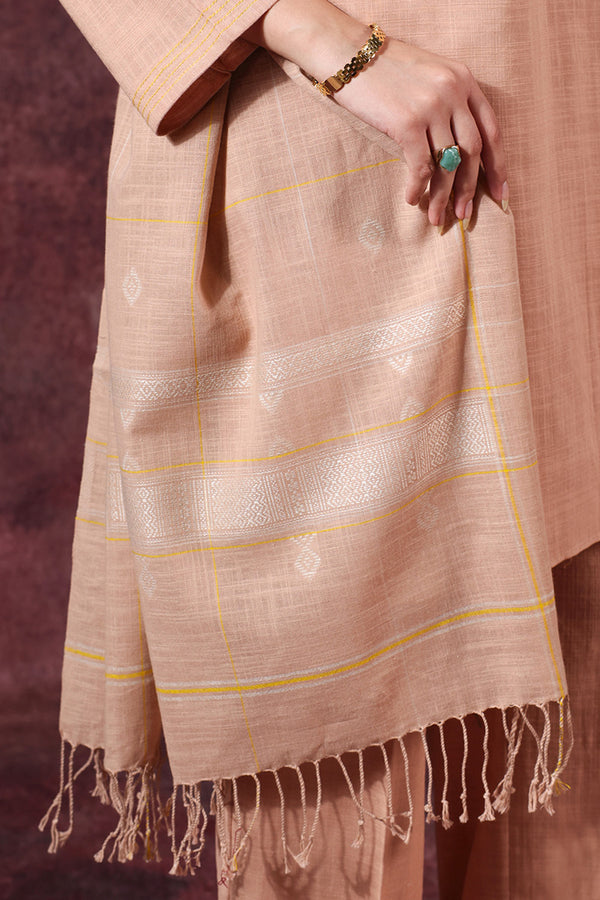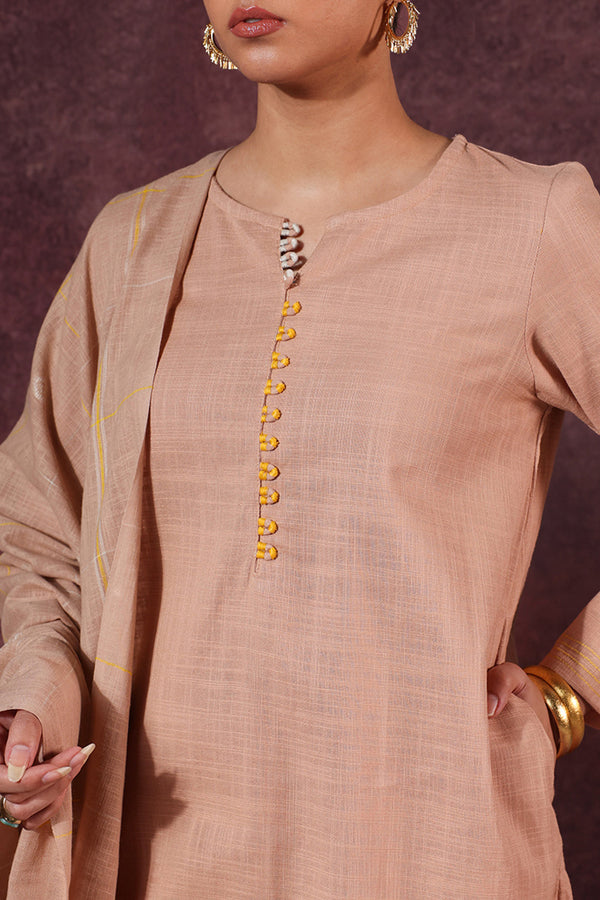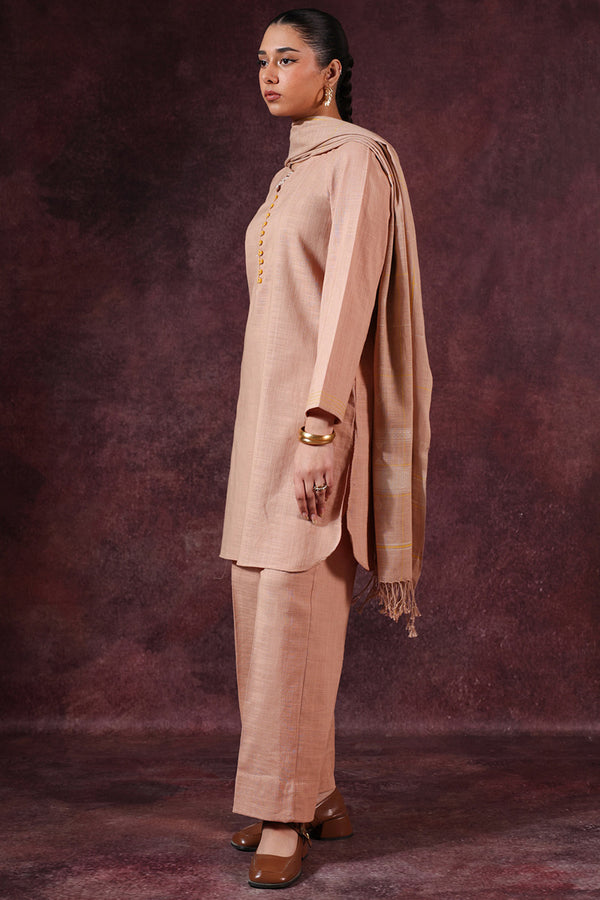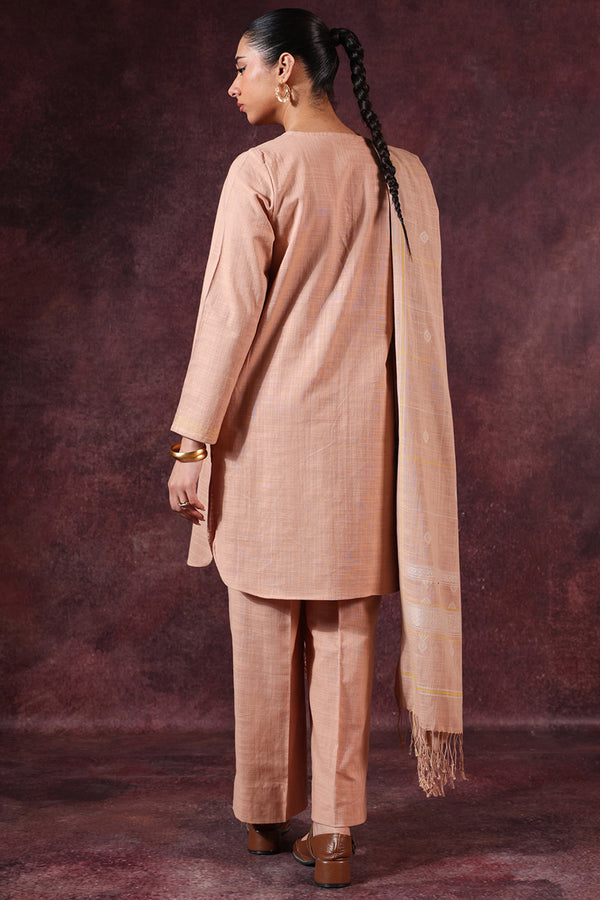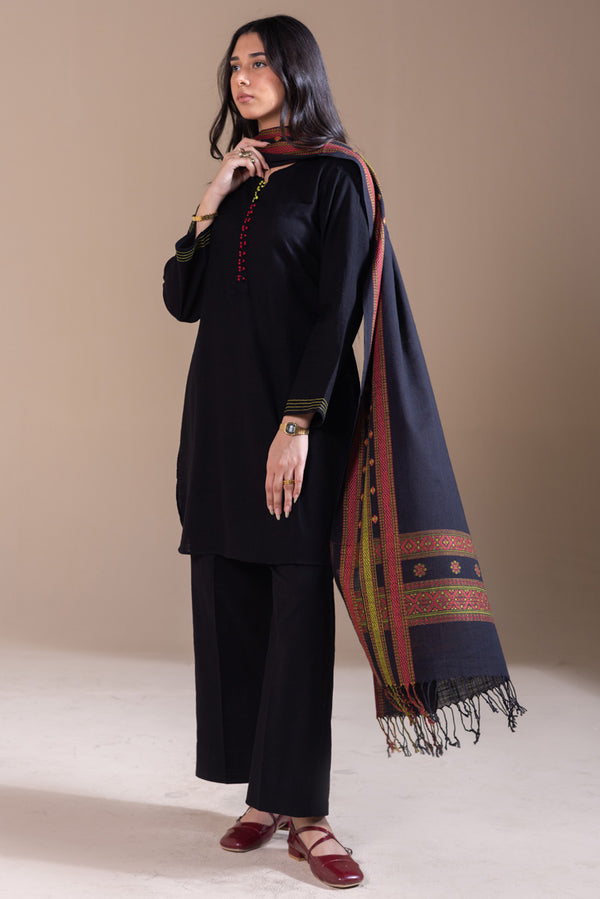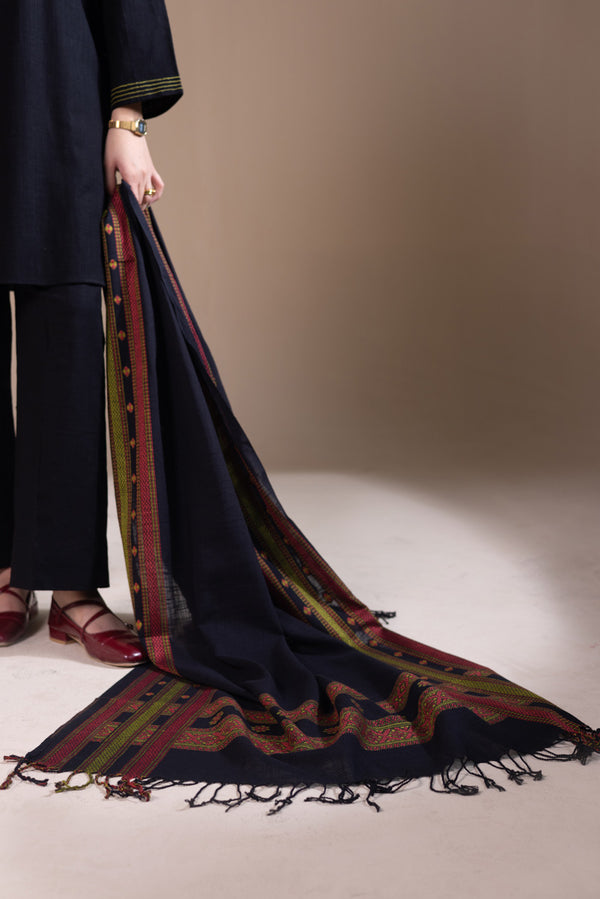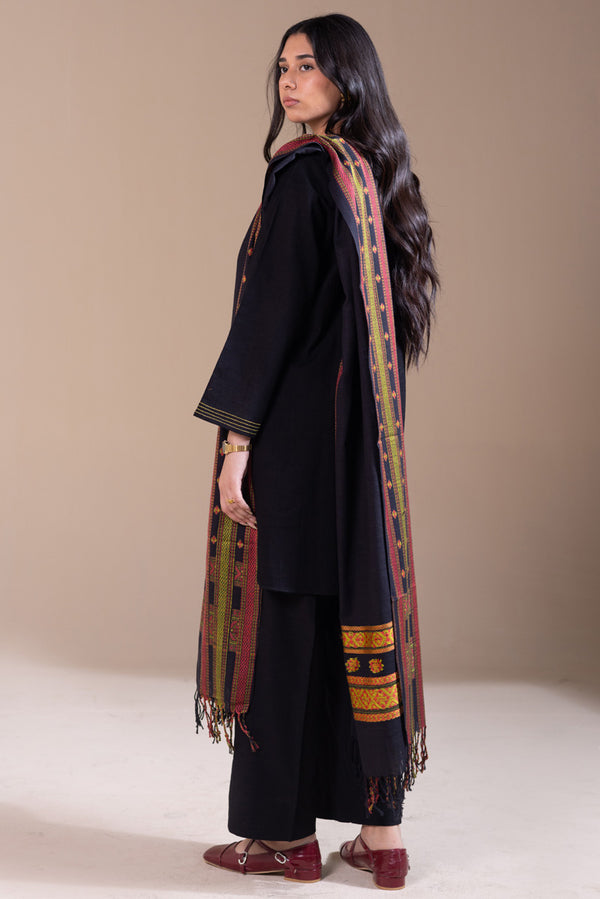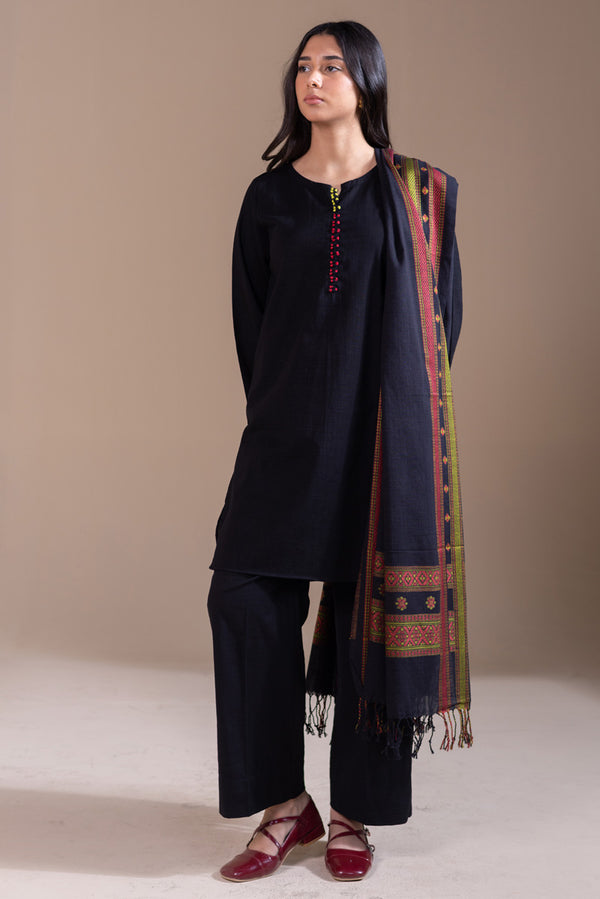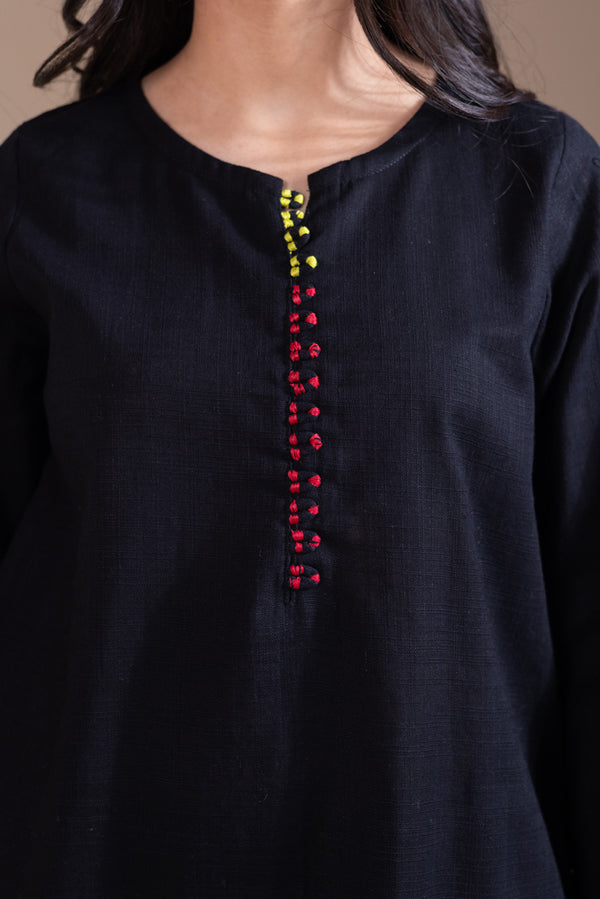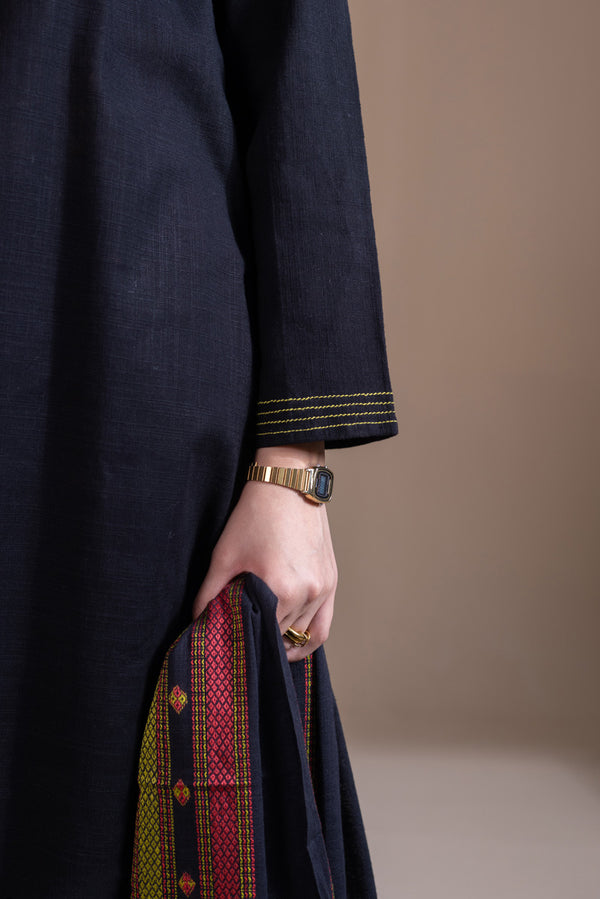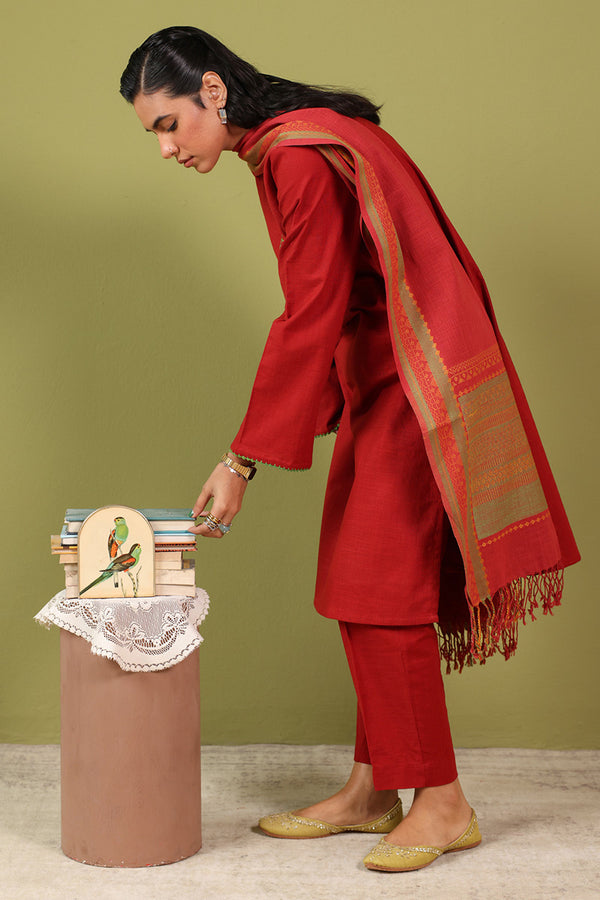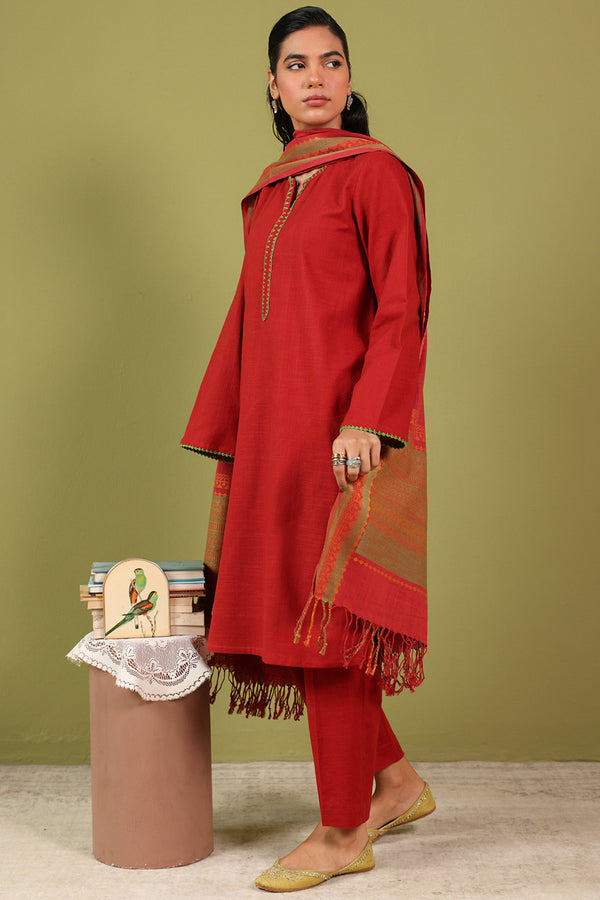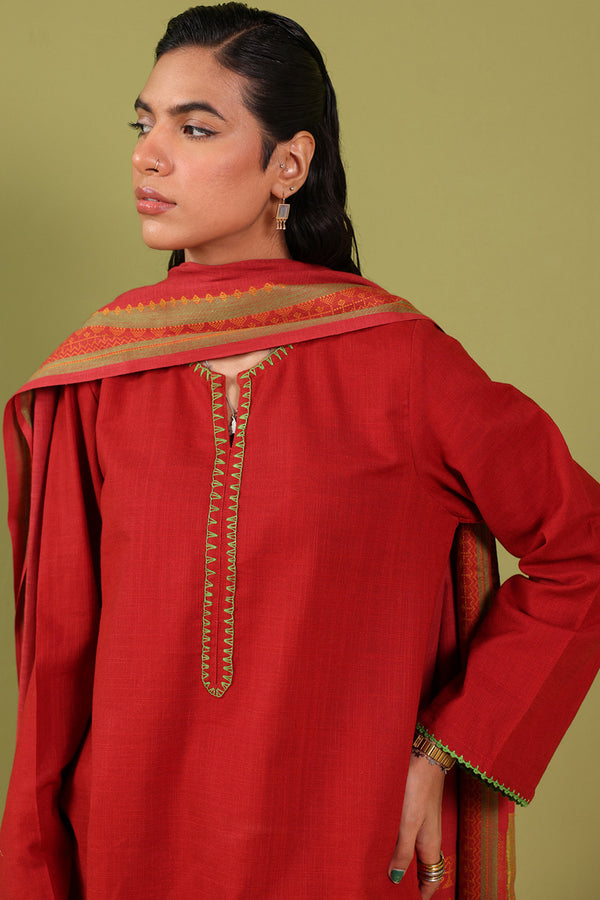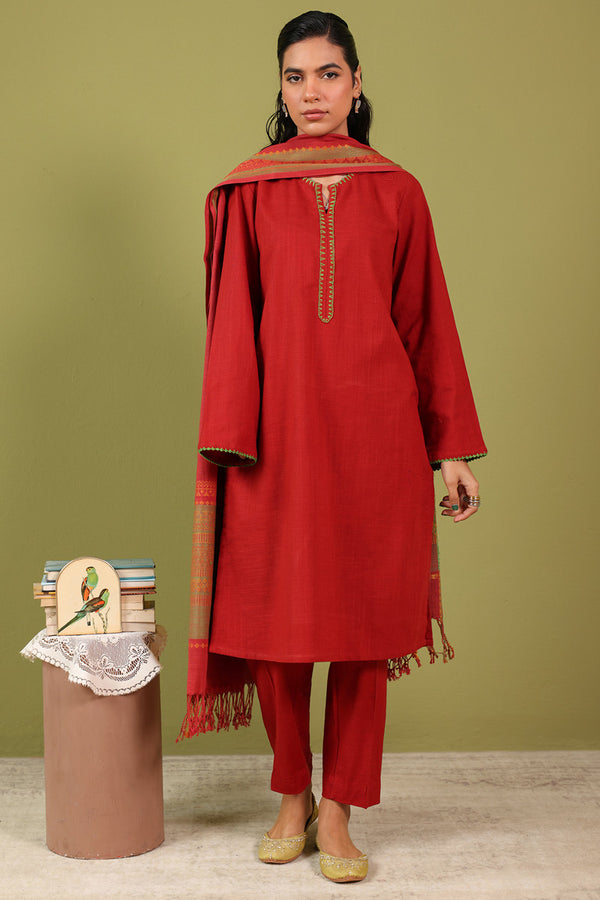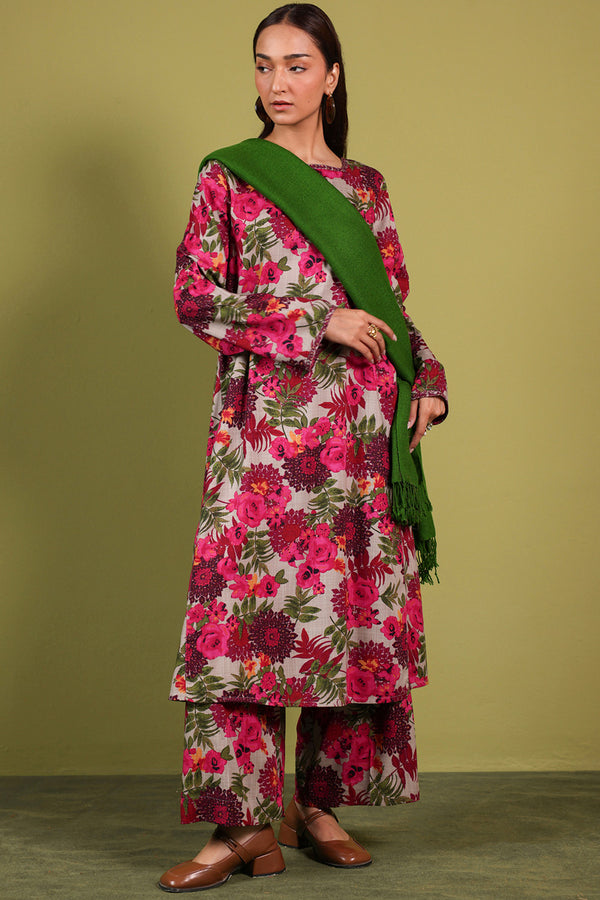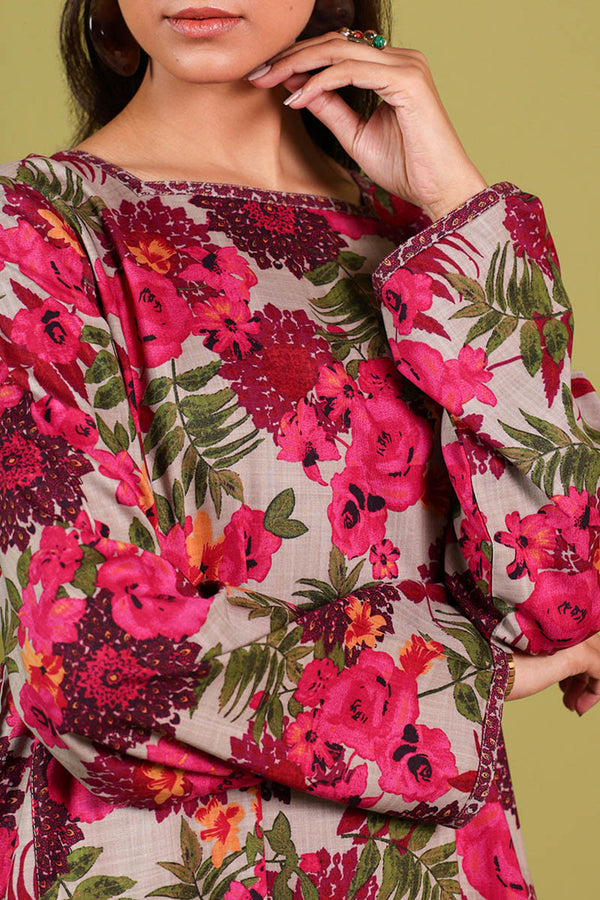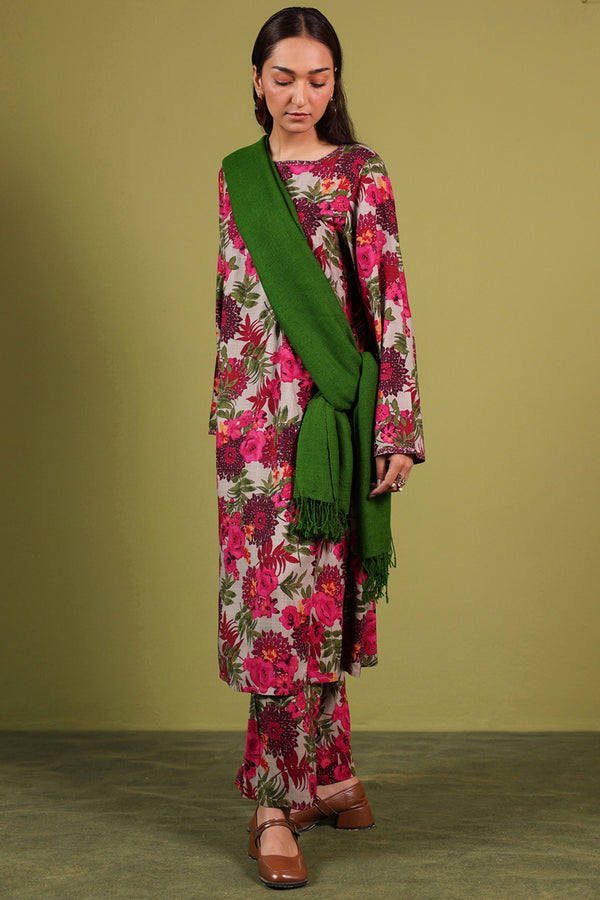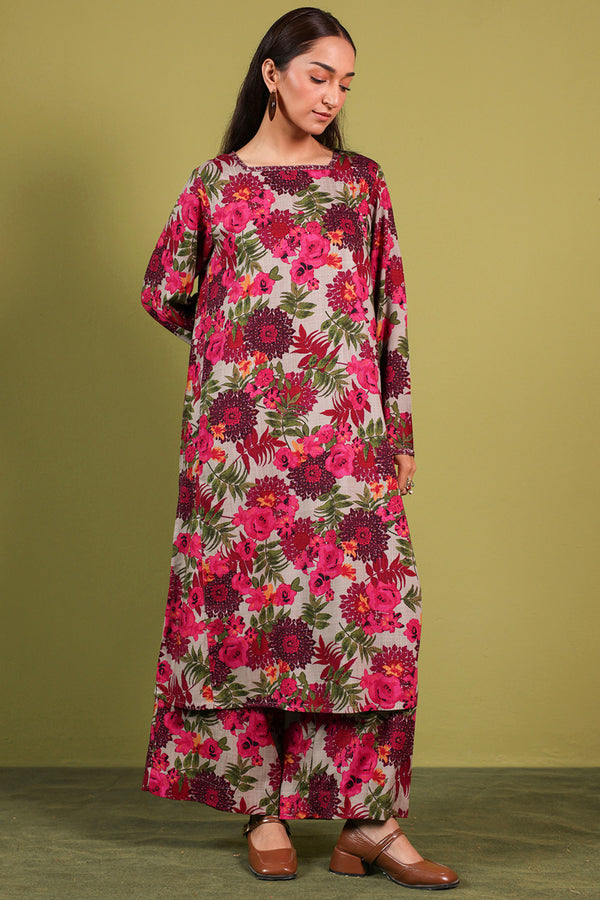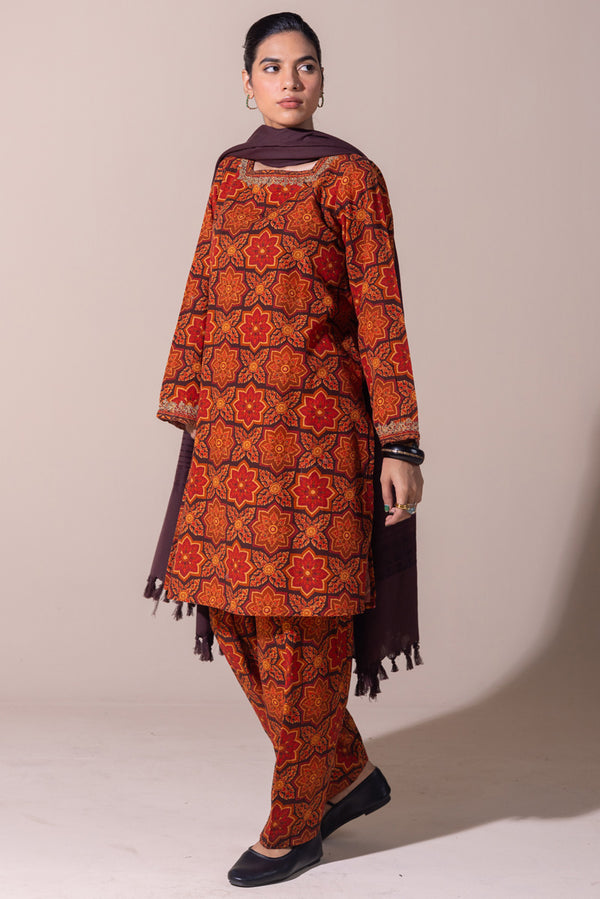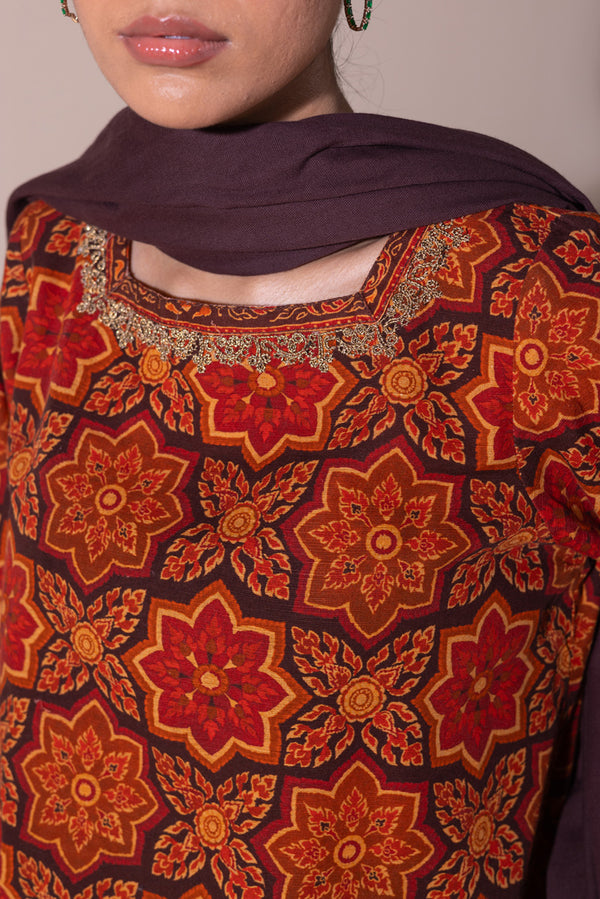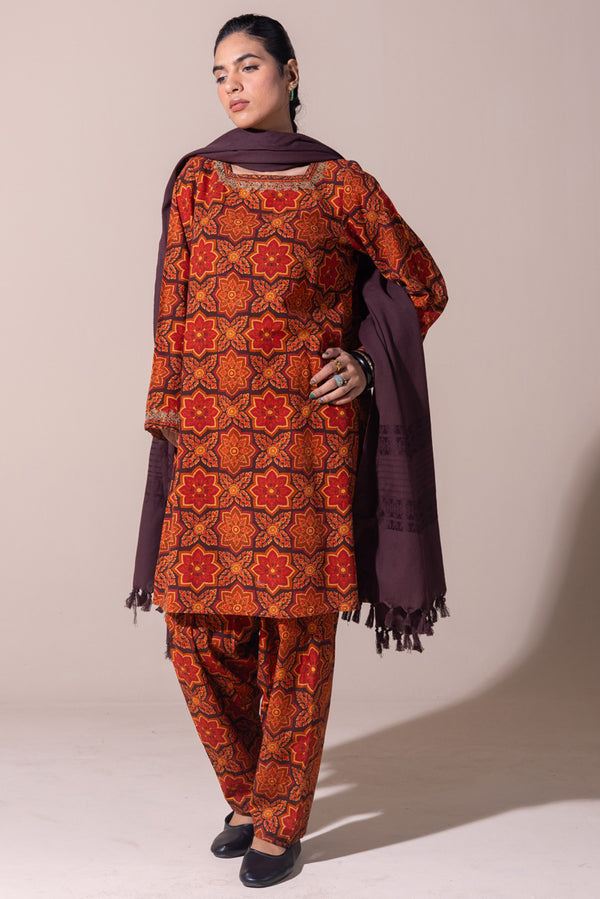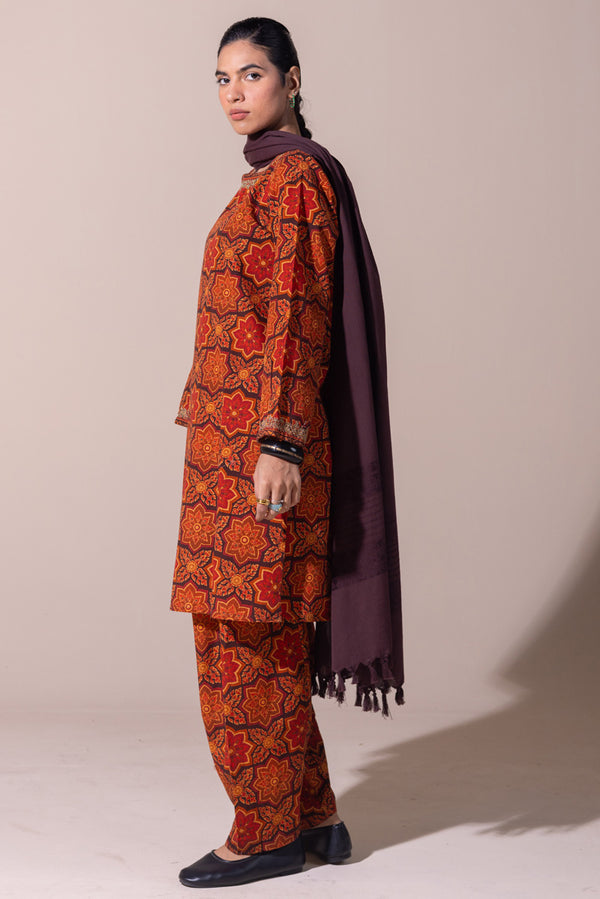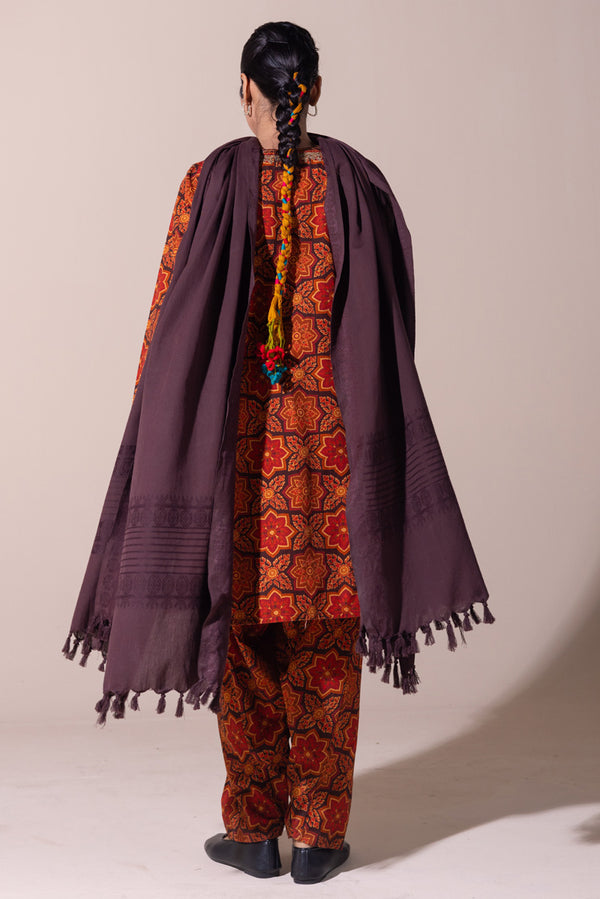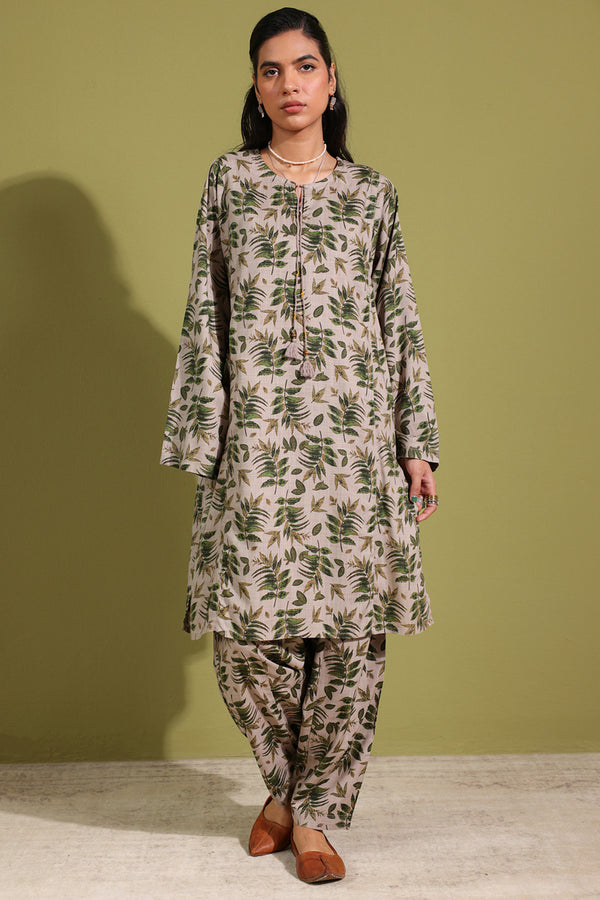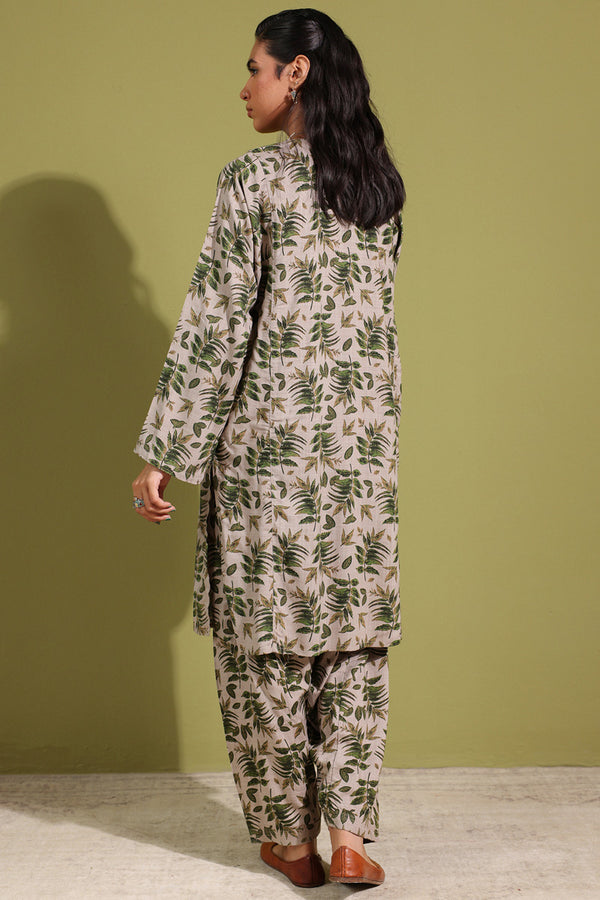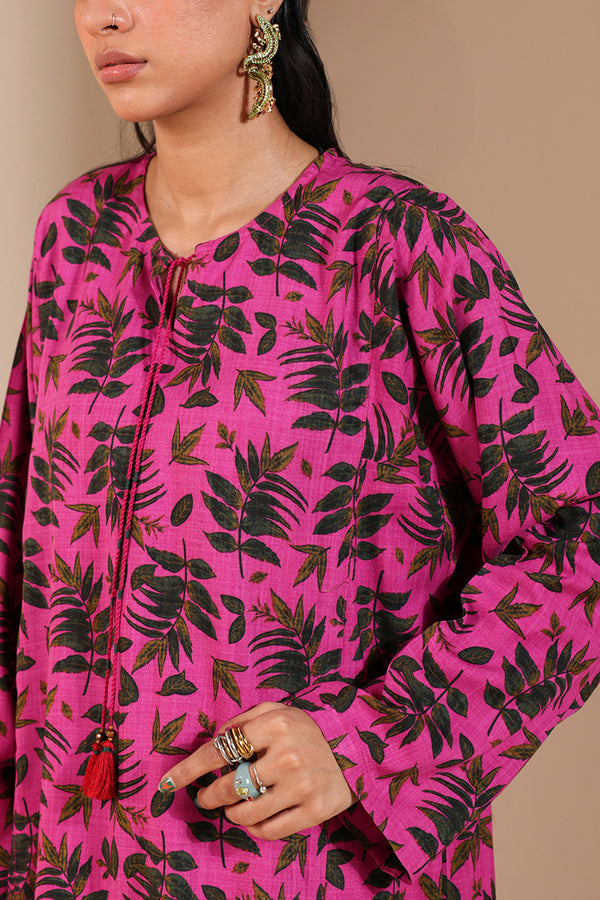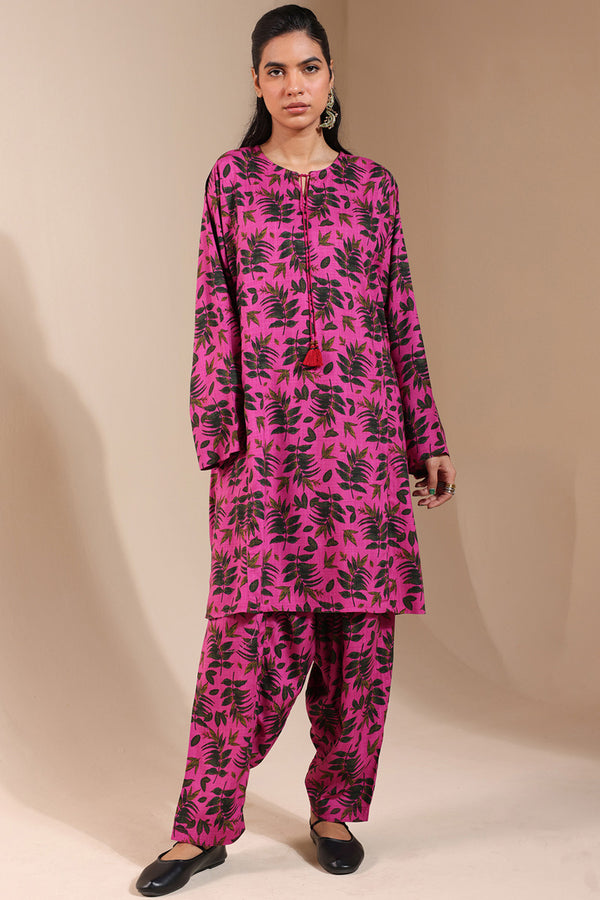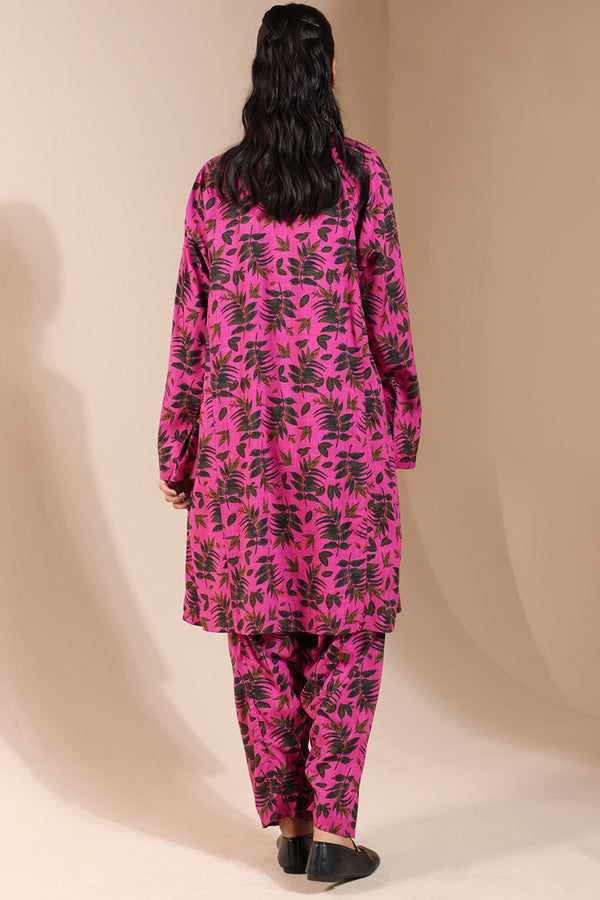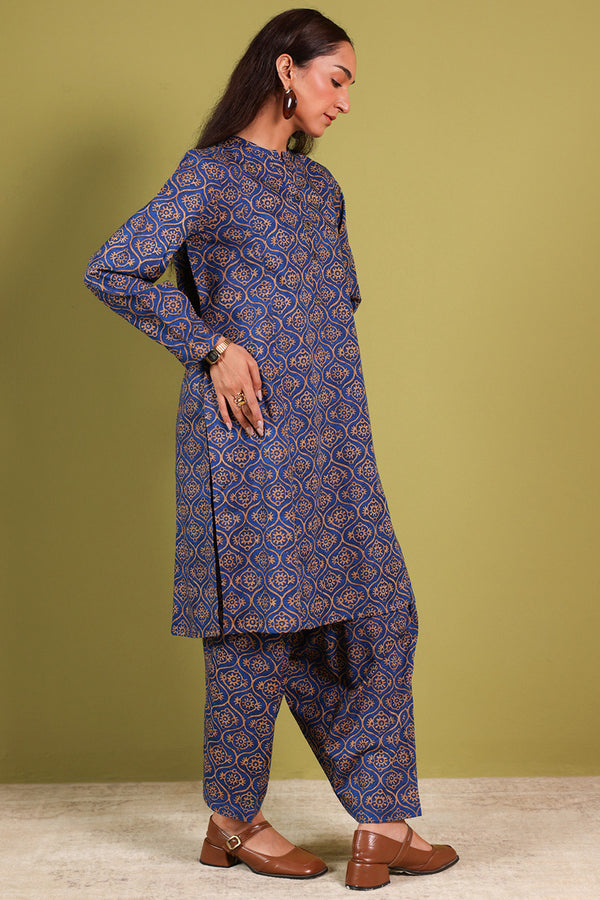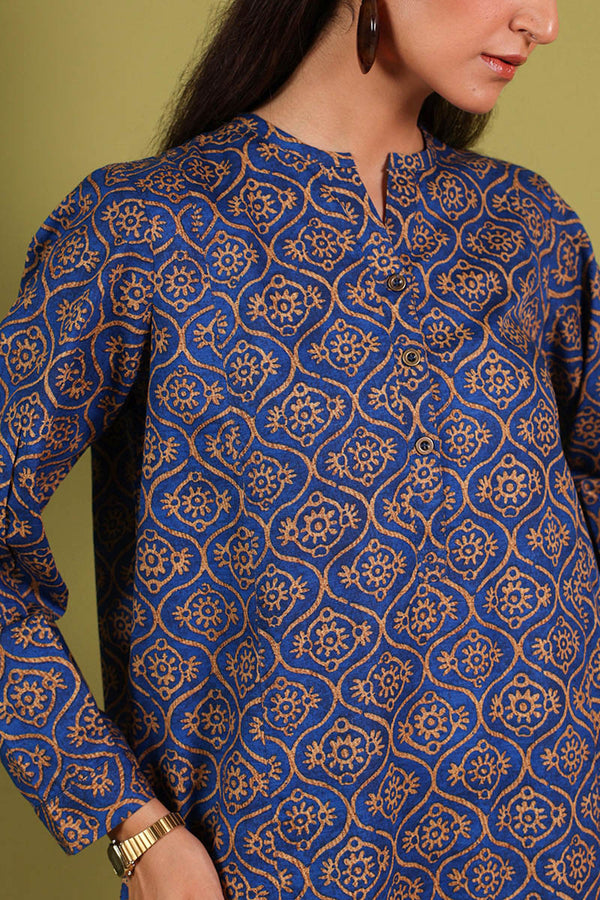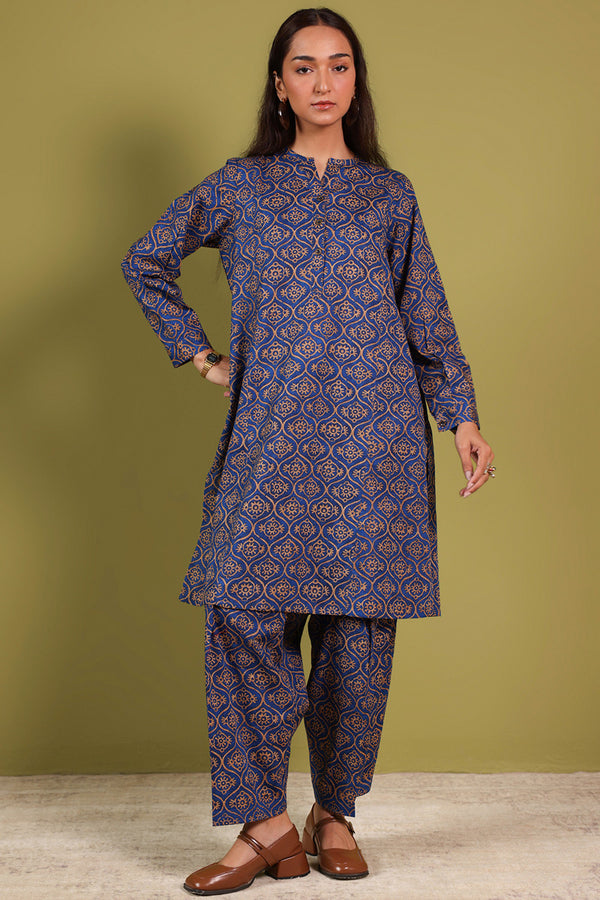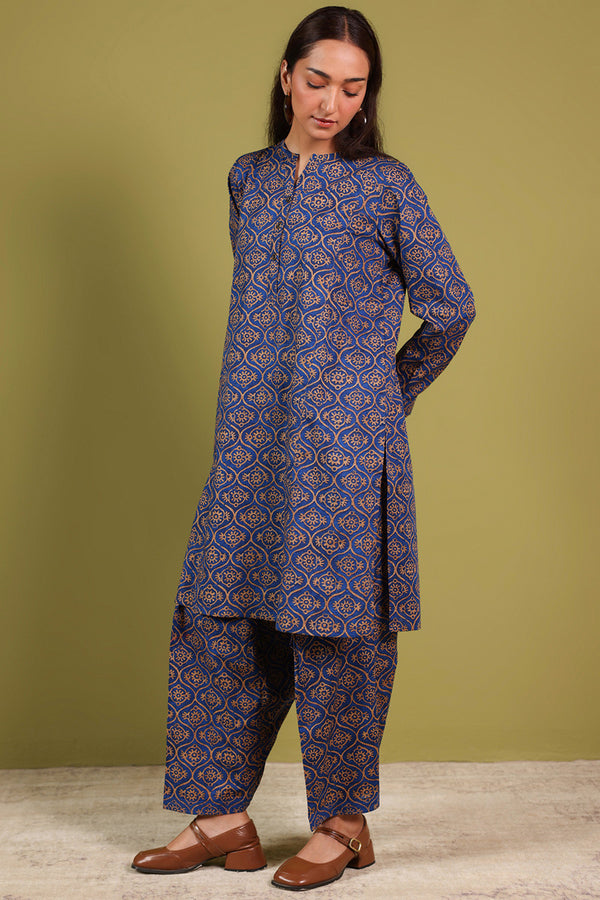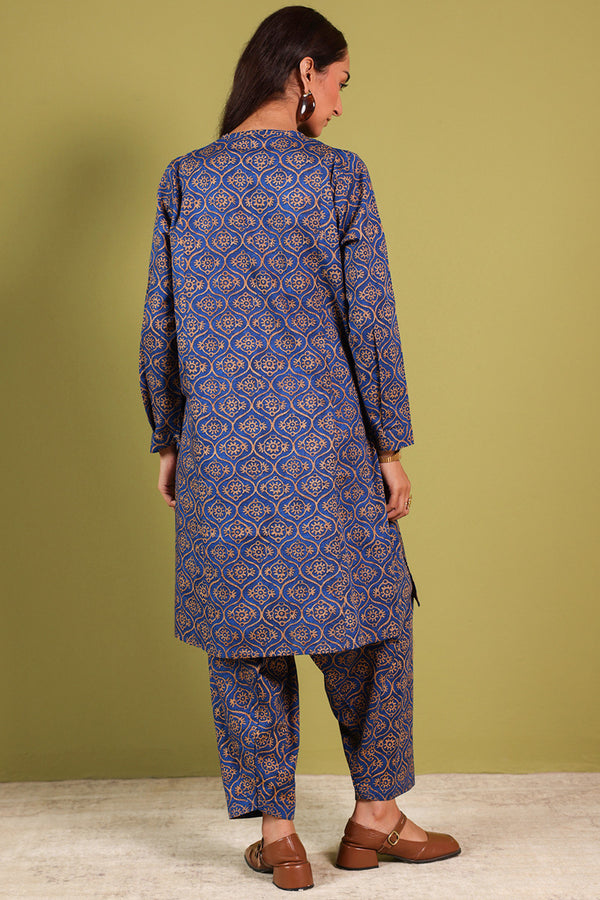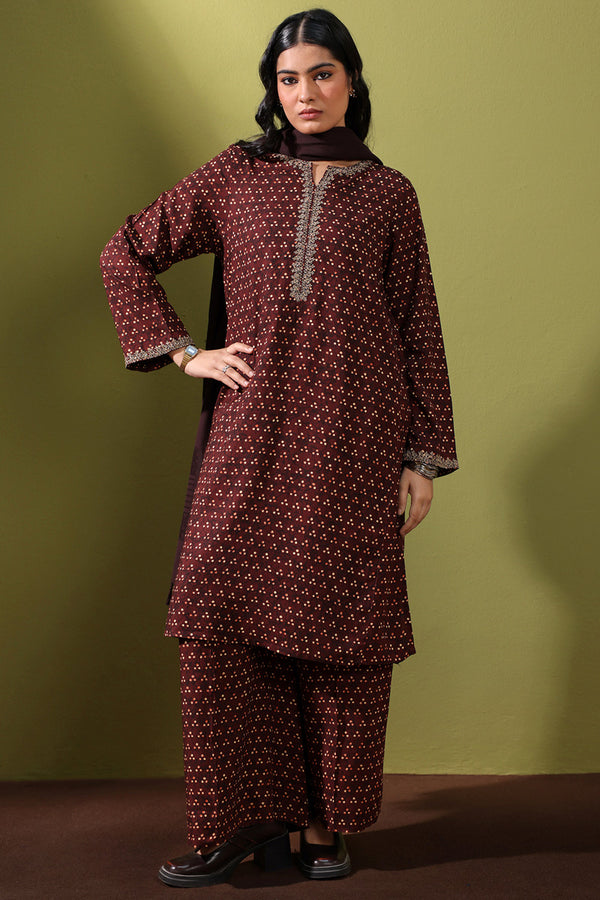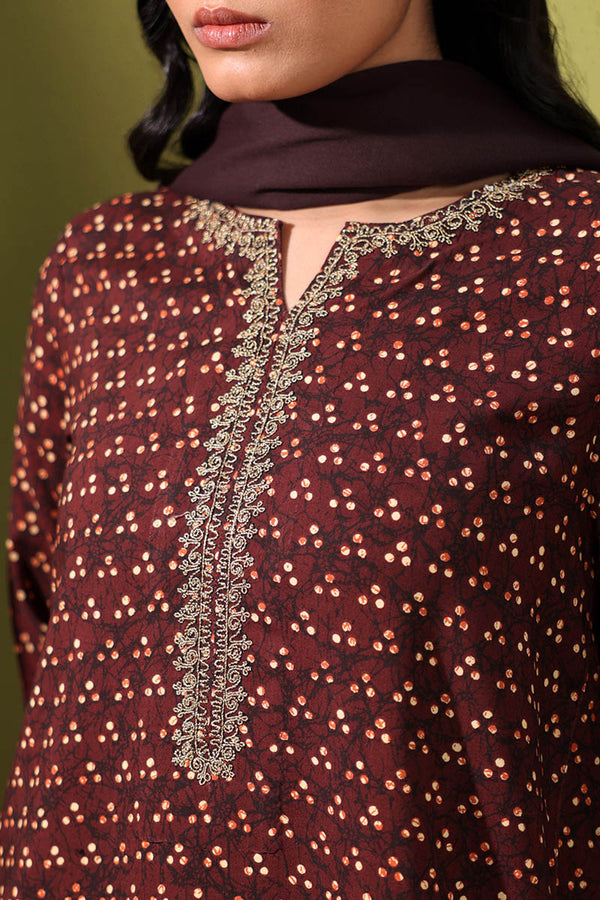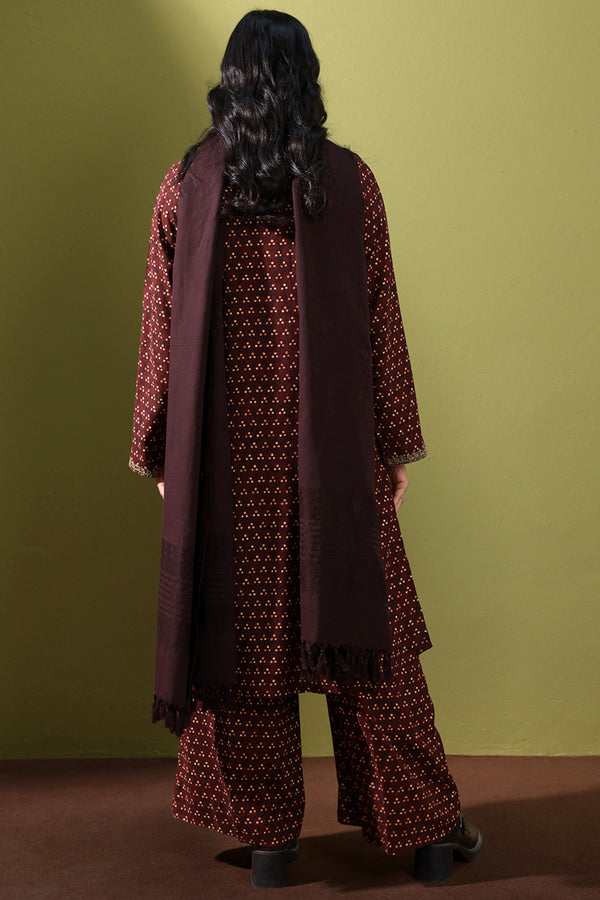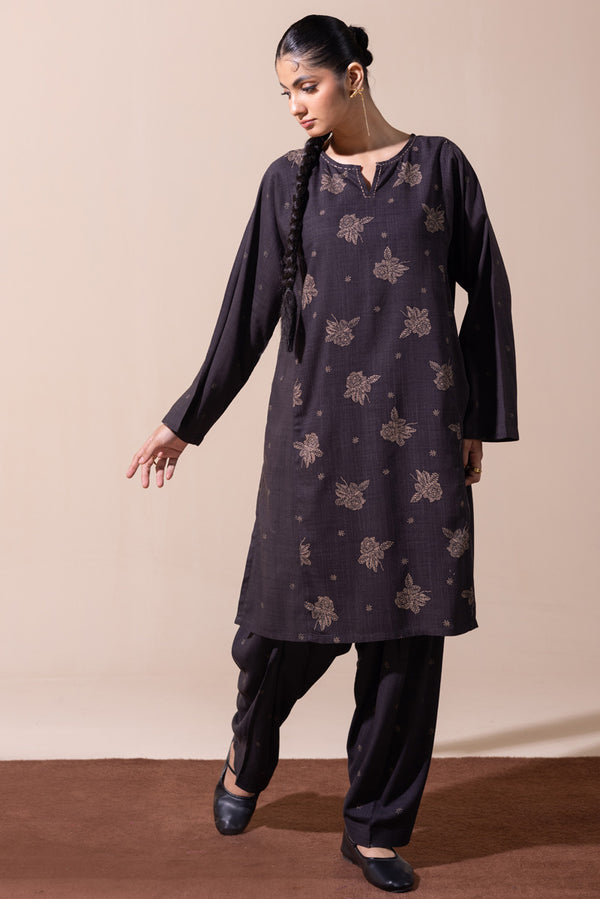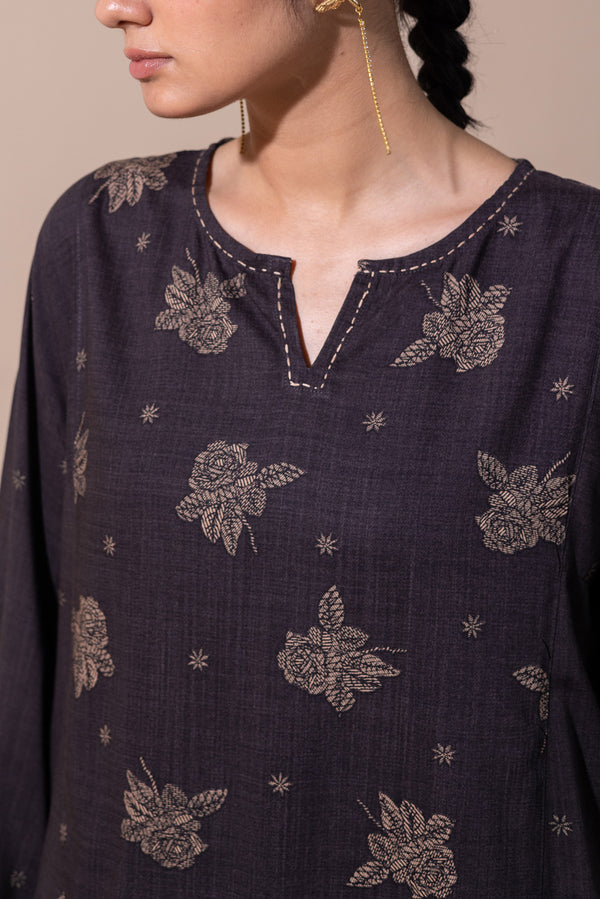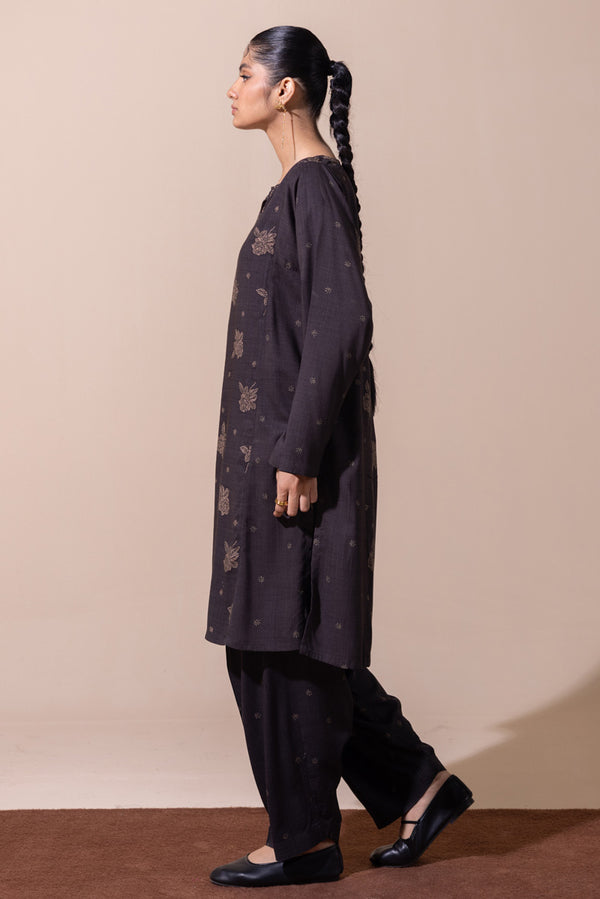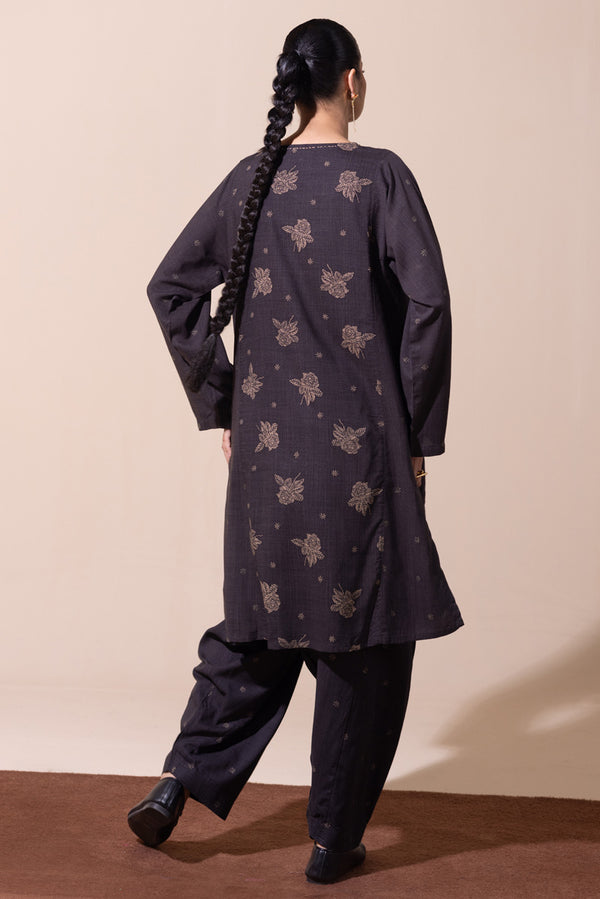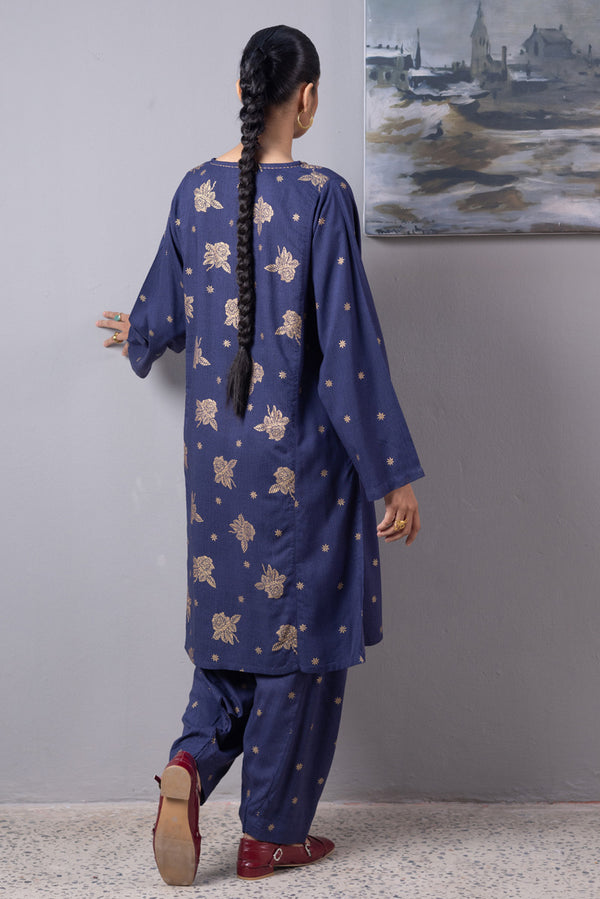June 09, 2019
In conversation with Khadija Rahman
Womanistan's tête-à-tête with our beloved Director and one of the creative forces behind Pakistan’s pioneering pret wear label, Khadija Rahman. Read on as she gives a low down on her inspirations, thought processes and the journey of how she has transformed not only GENERATION as a brand but also, the way people talk about fashion in Pakistan.
 1. Tell us the story of Generation? And you and Generation. How did you become such a huge part of it?
GENERATION started literally when I was born in the early 80s by my parents Nosheen and Saad Rahman, so the story is intertwined with me growing up. It started when there was no concept of Ready to Wear in Pakistan. Women were quite happy wearing their shiny polyster joras with power shoulders made by their local darzi accented by their multicoloured eyeshadows and big hair, and then in came GENERATION, introducing what? Cotton. It was a vibe by itself. GENERATION introduced sizes, fashion shows and so many concepts which were completely revolutionary for its time. The first store was in Liberty, Lahore. I remember there was a tape recorder playing the latest tracks on the counter and to its beat women were purchasing the newest designs off the racks. It didn’t take long for GENERATION to become the trendiest place in town. Women were entering the workforce and there was a demand for easy to wear, off the rack, fashionable clothing, and that was the gap GENERATION filled soon upon its arrival.
My sister Zainab and I grew up in and around fabric and spools of thread at the GENERATION HQ. We concocted many games using threads, buttons and fabric cuttings while we spent our afternoons there. The chowkidar Gul Mohammad was my soul mate. Begum Aftab, the Stitching head, taught me how to read the Koran while I held my Barbie in my right hand who I had brought with me so I could make her clothes. Gul Mohammad's son is a key part of the business today and Begum Aftab retired from GENERATION 2 years ago.
My mother, Nosheen Rahman, was the prime designer for GENERATION for the first two decades, supplemented by designers who were flown in from Paris to make capsule collections for the brand who used to stay in our guest room for many a month and became best friends with us by the time they left. Then the first fashion design institute was set up in Pakistan by the name of Pakistan Institute of Fashion Design, and we set up a team of designers around 2002/03.
When I became an adolescent I was rather put off by fashion as I found it superficial. Due to my love of design and ofcourse family, I decided to channelize it through the family business. I went on to pursue my undergrad in Fashion Design from London, which helped me develop a more nuanced understanding of fashion, where it could be unassuming, sensitive, and bubble up from the streets, instead of being imitated from the catwalks of London, Paris, Milan and New York. I joined the business in 2005 and later in 2011 I went onto pursue my MBA from Boston University so I could supplement my understanding of design with an understanding of the system.
1. Tell us the story of Generation? And you and Generation. How did you become such a huge part of it?
GENERATION started literally when I was born in the early 80s by my parents Nosheen and Saad Rahman, so the story is intertwined with me growing up. It started when there was no concept of Ready to Wear in Pakistan. Women were quite happy wearing their shiny polyster joras with power shoulders made by their local darzi accented by their multicoloured eyeshadows and big hair, and then in came GENERATION, introducing what? Cotton. It was a vibe by itself. GENERATION introduced sizes, fashion shows and so many concepts which were completely revolutionary for its time. The first store was in Liberty, Lahore. I remember there was a tape recorder playing the latest tracks on the counter and to its beat women were purchasing the newest designs off the racks. It didn’t take long for GENERATION to become the trendiest place in town. Women were entering the workforce and there was a demand for easy to wear, off the rack, fashionable clothing, and that was the gap GENERATION filled soon upon its arrival.
My sister Zainab and I grew up in and around fabric and spools of thread at the GENERATION HQ. We concocted many games using threads, buttons and fabric cuttings while we spent our afternoons there. The chowkidar Gul Mohammad was my soul mate. Begum Aftab, the Stitching head, taught me how to read the Koran while I held my Barbie in my right hand who I had brought with me so I could make her clothes. Gul Mohammad's son is a key part of the business today and Begum Aftab retired from GENERATION 2 years ago.
My mother, Nosheen Rahman, was the prime designer for GENERATION for the first two decades, supplemented by designers who were flown in from Paris to make capsule collections for the brand who used to stay in our guest room for many a month and became best friends with us by the time they left. Then the first fashion design institute was set up in Pakistan by the name of Pakistan Institute of Fashion Design, and we set up a team of designers around 2002/03.
When I became an adolescent I was rather put off by fashion as I found it superficial. Due to my love of design and ofcourse family, I decided to channelize it through the family business. I went on to pursue my undergrad in Fashion Design from London, which helped me develop a more nuanced understanding of fashion, where it could be unassuming, sensitive, and bubble up from the streets, instead of being imitated from the catwalks of London, Paris, Milan and New York. I joined the business in 2005 and later in 2011 I went onto pursue my MBA from Boston University so I could supplement my understanding of design with an understanding of the system.
 2. What did you decide to do differently when you joined Gen? What did it need and how did you fill that need?
When I was in London, I realised the things that I missed the most were shalwars, mangos and motia. Being away from home in a foreign country can really put your own self into perspective. I realized how beautiful Urdu was as a language, and quickly upon my return became immersed in the study of Urdu poetry. I came to realize how craft was something to be prized and the self to be celebrated. I learnt through my education in London, that inspiration could truly come from anywhere, and how one can form one’s own unique opinions and thoughts. I think the idea of thinking for oneself is really missing from our education system here. When I was in Alevels here in Lahore, I would read texts and paraphrase them as my own opinion because I didn’t know how to have my own opinion. I think that’s something which has long been missing from our design education too. Your art teacher if she doesn’t like what you have presented, shows you something from her own inspirations and says, why don’t you develop something like this, as opposed to push you more to develop your ideas and to enhance yourself. When I started work at GENERATION my vision was to truly create from scratch something beautiful, indigenous and unique.
2. What did you decide to do differently when you joined Gen? What did it need and how did you fill that need?
When I was in London, I realised the things that I missed the most were shalwars, mangos and motia. Being away from home in a foreign country can really put your own self into perspective. I realized how beautiful Urdu was as a language, and quickly upon my return became immersed in the study of Urdu poetry. I came to realize how craft was something to be prized and the self to be celebrated. I learnt through my education in London, that inspiration could truly come from anywhere, and how one can form one’s own unique opinions and thoughts. I think the idea of thinking for oneself is really missing from our education system here. When I was in Alevels here in Lahore, I would read texts and paraphrase them as my own opinion because I didn’t know how to have my own opinion. I think that’s something which has long been missing from our design education too. Your art teacher if she doesn’t like what you have presented, shows you something from her own inspirations and says, why don’t you develop something like this, as opposed to push you more to develop your ideas and to enhance yourself. When I started work at GENERATION my vision was to truly create from scratch something beautiful, indigenous and unique.
 3. How do you want women to feel when they wear GENERATION?
When someone wears GENERATION, they should feel beautiful, comfortable in their own skin and feel unapologetically South Asian, no matter where they may roam.
A few years ago we introduced this idea of diversity though our campaigns showing that there is no cookie cutter definition of beauty as we understand it. You can be stunning dark skinned, plus sized, with greying hair or no hair at all or neither of these things.
Two of our campaigns which really resonated with our customers was when we featured the wedding of a greying 50 year old beautiful woman, getting married for a second time, with her children by her side and another one where we featured women of varying complexions including dark and fair skinned, an albino and a girl with vitilgo (phulberri).
This year we have introduced our muse by the name of No Nonsense Nighat who quintissentially captures this notion quite well and is the brainchild of my colleague Harris Masood, who very aptly in his own words describes her as ‘someone who embodies a fantastical, loud, unabashed and unapologetic testament to desi style. Nighat is not meant to blend in; she is meant to command attention, make one uncomfortable and spark conversation. Years of self-deprecation and looking up to western or white ideals of beauty and style has come to the point where it’s becoming a threat to our cultural existence. We have conditioned ourselves to associate desi elements such as braided hair, chunky ethnic nose pins, even our sun-kissed skin tone, inferior to blow-dries, crystals and pristine fair skin.’
He goes on and says ‘This larger than life depiction of Nighat-ness is not meant to warrant inclusion or even your acceptance, it is a protest for space and visibility; it is a show of power in ethnic elements. I am here, I am desi, I am paindu and that, my dear is frankly what makes me so much cooler than you. It makes me unique, one of a kind and so much more special.
4. What is your personal style?
In my personal choices, I am a desi at heart. Everything seems so much prettier textured, patterned or draped! Saris, ghararas, dupattas are eternal love. My wardrobe is filled with pieces I have accumulated over the decades, narrating stories steeped in history.
You will probably find me in a hand embroidered white kurta shalwar on most days, bare foot and sitting cross legged with a pencil holding up my hair.
3. How do you want women to feel when they wear GENERATION?
When someone wears GENERATION, they should feel beautiful, comfortable in their own skin and feel unapologetically South Asian, no matter where they may roam.
A few years ago we introduced this idea of diversity though our campaigns showing that there is no cookie cutter definition of beauty as we understand it. You can be stunning dark skinned, plus sized, with greying hair or no hair at all or neither of these things.
Two of our campaigns which really resonated with our customers was when we featured the wedding of a greying 50 year old beautiful woman, getting married for a second time, with her children by her side and another one where we featured women of varying complexions including dark and fair skinned, an albino and a girl with vitilgo (phulberri).
This year we have introduced our muse by the name of No Nonsense Nighat who quintissentially captures this notion quite well and is the brainchild of my colleague Harris Masood, who very aptly in his own words describes her as ‘someone who embodies a fantastical, loud, unabashed and unapologetic testament to desi style. Nighat is not meant to blend in; she is meant to command attention, make one uncomfortable and spark conversation. Years of self-deprecation and looking up to western or white ideals of beauty and style has come to the point where it’s becoming a threat to our cultural existence. We have conditioned ourselves to associate desi elements such as braided hair, chunky ethnic nose pins, even our sun-kissed skin tone, inferior to blow-dries, crystals and pristine fair skin.’
He goes on and says ‘This larger than life depiction of Nighat-ness is not meant to warrant inclusion or even your acceptance, it is a protest for space and visibility; it is a show of power in ethnic elements. I am here, I am desi, I am paindu and that, my dear is frankly what makes me so much cooler than you. It makes me unique, one of a kind and so much more special.
4. What is your personal style?
In my personal choices, I am a desi at heart. Everything seems so much prettier textured, patterned or draped! Saris, ghararas, dupattas are eternal love. My wardrobe is filled with pieces I have accumulated over the decades, narrating stories steeped in history.
You will probably find me in a hand embroidered white kurta shalwar on most days, bare foot and sitting cross legged with a pencil holding up my hair.
 5. How does GENERATION embody your personal style?
A lot of people have come to me recently saying that what they see at GENERATION has a lot of me in it. That has surprises me, because I feel I give my teams a great level of independence to do their own thing. They are the ones who come up with all the brilliant ideas. I just walk through the ideas with them.
People say I dress in a bohemian manner. I don’t think that’s the look GENERATION has had in the past, but it seems that’s the look the brand has developed over the past few years.
Secondly, I’m not your cookie cutter version of beautiful too. I range between a size 12 and 14. I barely wear any make up despite my face being heavily scarred.
I blow dry once in 3 years and so on. Interestingly, the kind of marketing we have developed has become about embracing yourself for who you are. This direction has come from my team and not from myself. So not sure how it all works, but here it is!
5. How does GENERATION embody your personal style?
A lot of people have come to me recently saying that what they see at GENERATION has a lot of me in it. That has surprises me, because I feel I give my teams a great level of independence to do their own thing. They are the ones who come up with all the brilliant ideas. I just walk through the ideas with them.
People say I dress in a bohemian manner. I don’t think that’s the look GENERATION has had in the past, but it seems that’s the look the brand has developed over the past few years.
Secondly, I’m not your cookie cutter version of beautiful too. I range between a size 12 and 14. I barely wear any make up despite my face being heavily scarred.
I blow dry once in 3 years and so on. Interestingly, the kind of marketing we have developed has become about embracing yourself for who you are. This direction has come from my team and not from myself. So not sure how it all works, but here it is!
 6. What are three of the most favourite things in your closet and why?
Favourite items in my wardrobe would probably be a white hand embroidered shalwar kurta from Bahawalpur, velvet pheran from Kashmir, Indigo sari from across the border, and shocking pink shawl from Muree. The reason for my choice is self evident- they’re gorgeous.
7. Can you talk about 3 of your favourite GENERATION campaigns? Can you talk about any coming up?
‘Greater than Fear’ by Umar Riaz:
This campaign launched in Nov 2017 was pure poetry. It was our first foray into exploring notions of diversity through our models. We brought together 20 beautiful women who were all unique in their own ways; of varying ages, body types, complexions, and sexualities belonging to various walks of life. Umar Riaz brought to life these women through a series of very striking portraits, as well as through a film he put together where each individual brought something unique to the camera. The result was a masterful weaving of Urdu poetry and visuals leaving the viewer with goose bumps.
‘Nai Rang’ by Abdullah Harris:
Maham Ali, Rabia Dasti, Zainab Zahid Ali and Alina Tauseef were the stars of this campaign shot beautifully by Abdullah Harris in March 2018. This shoot celebrated the beauty in colour, that if you were dark or fair or wheatish, or were an albino or had phulberri (vitiligo) you were normal and accepted and utterly beautiful.
The most heart-warming aspect of this campaign were messages we received from people upon viewing these images. Some of them said to us, that I love myself more after seeing these images. Honestly, there can be little which would be more rewarding than that.
‘Jagg Magg Tarey’ by Mahoor Jamal:
This campaign brought to life our muse No Nonsense Nighat for Eid 2019 who is unabashedly Pakistani and flaunts her love for parandas, chunky nose pins and jhoomars and all things desi, yet updated for the 21st century so has a lot of swag and doesn’t take flack from anyone, showcased in a fantastical setting starring a diverse set of models of varying ages, complexions and hair types styled immaculately by Harris Masood and art directed into a dream by Mariam Ibraaz. The end results are these gorgeous images, celebrating diversity, generating important debates about beauty and are unconscionably Pakistani.
6. What are three of the most favourite things in your closet and why?
Favourite items in my wardrobe would probably be a white hand embroidered shalwar kurta from Bahawalpur, velvet pheran from Kashmir, Indigo sari from across the border, and shocking pink shawl from Muree. The reason for my choice is self evident- they’re gorgeous.
7. Can you talk about 3 of your favourite GENERATION campaigns? Can you talk about any coming up?
‘Greater than Fear’ by Umar Riaz:
This campaign launched in Nov 2017 was pure poetry. It was our first foray into exploring notions of diversity through our models. We brought together 20 beautiful women who were all unique in their own ways; of varying ages, body types, complexions, and sexualities belonging to various walks of life. Umar Riaz brought to life these women through a series of very striking portraits, as well as through a film he put together where each individual brought something unique to the camera. The result was a masterful weaving of Urdu poetry and visuals leaving the viewer with goose bumps.
‘Nai Rang’ by Abdullah Harris:
Maham Ali, Rabia Dasti, Zainab Zahid Ali and Alina Tauseef were the stars of this campaign shot beautifully by Abdullah Harris in March 2018. This shoot celebrated the beauty in colour, that if you were dark or fair or wheatish, or were an albino or had phulberri (vitiligo) you were normal and accepted and utterly beautiful.
The most heart-warming aspect of this campaign were messages we received from people upon viewing these images. Some of them said to us, that I love myself more after seeing these images. Honestly, there can be little which would be more rewarding than that.
‘Jagg Magg Tarey’ by Mahoor Jamal:
This campaign brought to life our muse No Nonsense Nighat for Eid 2019 who is unabashedly Pakistani and flaunts her love for parandas, chunky nose pins and jhoomars and all things desi, yet updated for the 21st century so has a lot of swag and doesn’t take flack from anyone, showcased in a fantastical setting starring a diverse set of models of varying ages, complexions and hair types styled immaculately by Harris Masood and art directed into a dream by Mariam Ibraaz. The end results are these gorgeous images, celebrating diversity, generating important debates about beauty and are unconscionably Pakistani.
 8. If you weren’t doing this, what would you be doing and why?
If I wasn’t doing fashion, my next career of choice was architecture. The scale and structure of built spaces have the ability to emote so effectively, highlighting the importance of both presence and absence. The romance of the architectural form and the seasons of the year is so intimate, where it provides a stage for the dance of light and shadow and for the play of wind and rain, using materials from the soil beneath, all interestingly divisible by the proportions of the human body.
9. Who is your non-fashion role model?
Lao Tzu centuries ago said something very powerful. He said everyone aspires to be a rock because rocks are strong and bear the tests of time. He wondered why people don’t want to be a rose. A rose is so beautiful and sensitive, at the same time fragile, but when it exists it really blooms with all its glory.
I’m thinking I want to be a rose. Iqbal also said something really poignant,
"tu bacha bacha keh na rakh issay, ye ayeina hai vo ayeina,
keh shikasta ho to azeez tar hai nigah e ayeina saaz mein"
8. If you weren’t doing this, what would you be doing and why?
If I wasn’t doing fashion, my next career of choice was architecture. The scale and structure of built spaces have the ability to emote so effectively, highlighting the importance of both presence and absence. The romance of the architectural form and the seasons of the year is so intimate, where it provides a stage for the dance of light and shadow and for the play of wind and rain, using materials from the soil beneath, all interestingly divisible by the proportions of the human body.
9. Who is your non-fashion role model?
Lao Tzu centuries ago said something very powerful. He said everyone aspires to be a rock because rocks are strong and bear the tests of time. He wondered why people don’t want to be a rose. A rose is so beautiful and sensitive, at the same time fragile, but when it exists it really blooms with all its glory.
I’m thinking I want to be a rose. Iqbal also said something really poignant,
"tu bacha bacha keh na rakh issay, ye ayeina hai vo ayeina,
keh shikasta ho to azeez tar hai nigah e ayeina saaz mein"
 1. Tell us the story of Generation? And you and Generation. How did you become such a huge part of it?
GENERATION started literally when I was born in the early 80s by my parents Nosheen and Saad Rahman, so the story is intertwined with me growing up. It started when there was no concept of Ready to Wear in Pakistan. Women were quite happy wearing their shiny polyster joras with power shoulders made by their local darzi accented by their multicoloured eyeshadows and big hair, and then in came GENERATION, introducing what? Cotton. It was a vibe by itself. GENERATION introduced sizes, fashion shows and so many concepts which were completely revolutionary for its time. The first store was in Liberty, Lahore. I remember there was a tape recorder playing the latest tracks on the counter and to its beat women were purchasing the newest designs off the racks. It didn’t take long for GENERATION to become the trendiest place in town. Women were entering the workforce and there was a demand for easy to wear, off the rack, fashionable clothing, and that was the gap GENERATION filled soon upon its arrival.
My sister Zainab and I grew up in and around fabric and spools of thread at the GENERATION HQ. We concocted many games using threads, buttons and fabric cuttings while we spent our afternoons there. The chowkidar Gul Mohammad was my soul mate. Begum Aftab, the Stitching head, taught me how to read the Koran while I held my Barbie in my right hand who I had brought with me so I could make her clothes. Gul Mohammad's son is a key part of the business today and Begum Aftab retired from GENERATION 2 years ago.
My mother, Nosheen Rahman, was the prime designer for GENERATION for the first two decades, supplemented by designers who were flown in from Paris to make capsule collections for the brand who used to stay in our guest room for many a month and became best friends with us by the time they left. Then the first fashion design institute was set up in Pakistan by the name of Pakistan Institute of Fashion Design, and we set up a team of designers around 2002/03.
When I became an adolescent I was rather put off by fashion as I found it superficial. Due to my love of design and ofcourse family, I decided to channelize it through the family business. I went on to pursue my undergrad in Fashion Design from London, which helped me develop a more nuanced understanding of fashion, where it could be unassuming, sensitive, and bubble up from the streets, instead of being imitated from the catwalks of London, Paris, Milan and New York. I joined the business in 2005 and later in 2011 I went onto pursue my MBA from Boston University so I could supplement my understanding of design with an understanding of the system.
1. Tell us the story of Generation? And you and Generation. How did you become such a huge part of it?
GENERATION started literally when I was born in the early 80s by my parents Nosheen and Saad Rahman, so the story is intertwined with me growing up. It started when there was no concept of Ready to Wear in Pakistan. Women were quite happy wearing their shiny polyster joras with power shoulders made by their local darzi accented by their multicoloured eyeshadows and big hair, and then in came GENERATION, introducing what? Cotton. It was a vibe by itself. GENERATION introduced sizes, fashion shows and so many concepts which were completely revolutionary for its time. The first store was in Liberty, Lahore. I remember there was a tape recorder playing the latest tracks on the counter and to its beat women were purchasing the newest designs off the racks. It didn’t take long for GENERATION to become the trendiest place in town. Women were entering the workforce and there was a demand for easy to wear, off the rack, fashionable clothing, and that was the gap GENERATION filled soon upon its arrival.
My sister Zainab and I grew up in and around fabric and spools of thread at the GENERATION HQ. We concocted many games using threads, buttons and fabric cuttings while we spent our afternoons there. The chowkidar Gul Mohammad was my soul mate. Begum Aftab, the Stitching head, taught me how to read the Koran while I held my Barbie in my right hand who I had brought with me so I could make her clothes. Gul Mohammad's son is a key part of the business today and Begum Aftab retired from GENERATION 2 years ago.
My mother, Nosheen Rahman, was the prime designer for GENERATION for the first two decades, supplemented by designers who were flown in from Paris to make capsule collections for the brand who used to stay in our guest room for many a month and became best friends with us by the time they left. Then the first fashion design institute was set up in Pakistan by the name of Pakistan Institute of Fashion Design, and we set up a team of designers around 2002/03.
When I became an adolescent I was rather put off by fashion as I found it superficial. Due to my love of design and ofcourse family, I decided to channelize it through the family business. I went on to pursue my undergrad in Fashion Design from London, which helped me develop a more nuanced understanding of fashion, where it could be unassuming, sensitive, and bubble up from the streets, instead of being imitated from the catwalks of London, Paris, Milan and New York. I joined the business in 2005 and later in 2011 I went onto pursue my MBA from Boston University so I could supplement my understanding of design with an understanding of the system.
 2. What did you decide to do differently when you joined Gen? What did it need and how did you fill that need?
When I was in London, I realised the things that I missed the most were shalwars, mangos and motia. Being away from home in a foreign country can really put your own self into perspective. I realized how beautiful Urdu was as a language, and quickly upon my return became immersed in the study of Urdu poetry. I came to realize how craft was something to be prized and the self to be celebrated. I learnt through my education in London, that inspiration could truly come from anywhere, and how one can form one’s own unique opinions and thoughts. I think the idea of thinking for oneself is really missing from our education system here. When I was in Alevels here in Lahore, I would read texts and paraphrase them as my own opinion because I didn’t know how to have my own opinion. I think that’s something which has long been missing from our design education too. Your art teacher if she doesn’t like what you have presented, shows you something from her own inspirations and says, why don’t you develop something like this, as opposed to push you more to develop your ideas and to enhance yourself. When I started work at GENERATION my vision was to truly create from scratch something beautiful, indigenous and unique.
2. What did you decide to do differently when you joined Gen? What did it need and how did you fill that need?
When I was in London, I realised the things that I missed the most were shalwars, mangos and motia. Being away from home in a foreign country can really put your own self into perspective. I realized how beautiful Urdu was as a language, and quickly upon my return became immersed in the study of Urdu poetry. I came to realize how craft was something to be prized and the self to be celebrated. I learnt through my education in London, that inspiration could truly come from anywhere, and how one can form one’s own unique opinions and thoughts. I think the idea of thinking for oneself is really missing from our education system here. When I was in Alevels here in Lahore, I would read texts and paraphrase them as my own opinion because I didn’t know how to have my own opinion. I think that’s something which has long been missing from our design education too. Your art teacher if she doesn’t like what you have presented, shows you something from her own inspirations and says, why don’t you develop something like this, as opposed to push you more to develop your ideas and to enhance yourself. When I started work at GENERATION my vision was to truly create from scratch something beautiful, indigenous and unique.
 3. How do you want women to feel when they wear GENERATION?
When someone wears GENERATION, they should feel beautiful, comfortable in their own skin and feel unapologetically South Asian, no matter where they may roam.
A few years ago we introduced this idea of diversity though our campaigns showing that there is no cookie cutter definition of beauty as we understand it. You can be stunning dark skinned, plus sized, with greying hair or no hair at all or neither of these things.
Two of our campaigns which really resonated with our customers was when we featured the wedding of a greying 50 year old beautiful woman, getting married for a second time, with her children by her side and another one where we featured women of varying complexions including dark and fair skinned, an albino and a girl with vitilgo (phulberri).
This year we have introduced our muse by the name of No Nonsense Nighat who quintissentially captures this notion quite well and is the brainchild of my colleague Harris Masood, who very aptly in his own words describes her as ‘someone who embodies a fantastical, loud, unabashed and unapologetic testament to desi style. Nighat is not meant to blend in; she is meant to command attention, make one uncomfortable and spark conversation. Years of self-deprecation and looking up to western or white ideals of beauty and style has come to the point where it’s becoming a threat to our cultural existence. We have conditioned ourselves to associate desi elements such as braided hair, chunky ethnic nose pins, even our sun-kissed skin tone, inferior to blow-dries, crystals and pristine fair skin.’
He goes on and says ‘This larger than life depiction of Nighat-ness is not meant to warrant inclusion or even your acceptance, it is a protest for space and visibility; it is a show of power in ethnic elements. I am here, I am desi, I am paindu and that, my dear is frankly what makes me so much cooler than you. It makes me unique, one of a kind and so much more special.
4. What is your personal style?
In my personal choices, I am a desi at heart. Everything seems so much prettier textured, patterned or draped! Saris, ghararas, dupattas are eternal love. My wardrobe is filled with pieces I have accumulated over the decades, narrating stories steeped in history.
You will probably find me in a hand embroidered white kurta shalwar on most days, bare foot and sitting cross legged with a pencil holding up my hair.
3. How do you want women to feel when they wear GENERATION?
When someone wears GENERATION, they should feel beautiful, comfortable in their own skin and feel unapologetically South Asian, no matter where they may roam.
A few years ago we introduced this idea of diversity though our campaigns showing that there is no cookie cutter definition of beauty as we understand it. You can be stunning dark skinned, plus sized, with greying hair or no hair at all or neither of these things.
Two of our campaigns which really resonated with our customers was when we featured the wedding of a greying 50 year old beautiful woman, getting married for a second time, with her children by her side and another one where we featured women of varying complexions including dark and fair skinned, an albino and a girl with vitilgo (phulberri).
This year we have introduced our muse by the name of No Nonsense Nighat who quintissentially captures this notion quite well and is the brainchild of my colleague Harris Masood, who very aptly in his own words describes her as ‘someone who embodies a fantastical, loud, unabashed and unapologetic testament to desi style. Nighat is not meant to blend in; she is meant to command attention, make one uncomfortable and spark conversation. Years of self-deprecation and looking up to western or white ideals of beauty and style has come to the point where it’s becoming a threat to our cultural existence. We have conditioned ourselves to associate desi elements such as braided hair, chunky ethnic nose pins, even our sun-kissed skin tone, inferior to blow-dries, crystals and pristine fair skin.’
He goes on and says ‘This larger than life depiction of Nighat-ness is not meant to warrant inclusion or even your acceptance, it is a protest for space and visibility; it is a show of power in ethnic elements. I am here, I am desi, I am paindu and that, my dear is frankly what makes me so much cooler than you. It makes me unique, one of a kind and so much more special.
4. What is your personal style?
In my personal choices, I am a desi at heart. Everything seems so much prettier textured, patterned or draped! Saris, ghararas, dupattas are eternal love. My wardrobe is filled with pieces I have accumulated over the decades, narrating stories steeped in history.
You will probably find me in a hand embroidered white kurta shalwar on most days, bare foot and sitting cross legged with a pencil holding up my hair.
 5. How does GENERATION embody your personal style?
A lot of people have come to me recently saying that what they see at GENERATION has a lot of me in it. That has surprises me, because I feel I give my teams a great level of independence to do their own thing. They are the ones who come up with all the brilliant ideas. I just walk through the ideas with them.
People say I dress in a bohemian manner. I don’t think that’s the look GENERATION has had in the past, but it seems that’s the look the brand has developed over the past few years.
Secondly, I’m not your cookie cutter version of beautiful too. I range between a size 12 and 14. I barely wear any make up despite my face being heavily scarred.
I blow dry once in 3 years and so on. Interestingly, the kind of marketing we have developed has become about embracing yourself for who you are. This direction has come from my team and not from myself. So not sure how it all works, but here it is!
5. How does GENERATION embody your personal style?
A lot of people have come to me recently saying that what they see at GENERATION has a lot of me in it. That has surprises me, because I feel I give my teams a great level of independence to do their own thing. They are the ones who come up with all the brilliant ideas. I just walk through the ideas with them.
People say I dress in a bohemian manner. I don’t think that’s the look GENERATION has had in the past, but it seems that’s the look the brand has developed over the past few years.
Secondly, I’m not your cookie cutter version of beautiful too. I range between a size 12 and 14. I barely wear any make up despite my face being heavily scarred.
I blow dry once in 3 years and so on. Interestingly, the kind of marketing we have developed has become about embracing yourself for who you are. This direction has come from my team and not from myself. So not sure how it all works, but here it is!
 6. What are three of the most favourite things in your closet and why?
Favourite items in my wardrobe would probably be a white hand embroidered shalwar kurta from Bahawalpur, velvet pheran from Kashmir, Indigo sari from across the border, and shocking pink shawl from Muree. The reason for my choice is self evident- they’re gorgeous.
7. Can you talk about 3 of your favourite GENERATION campaigns? Can you talk about any coming up?
‘Greater than Fear’ by Umar Riaz:
This campaign launched in Nov 2017 was pure poetry. It was our first foray into exploring notions of diversity through our models. We brought together 20 beautiful women who were all unique in their own ways; of varying ages, body types, complexions, and sexualities belonging to various walks of life. Umar Riaz brought to life these women through a series of very striking portraits, as well as through a film he put together where each individual brought something unique to the camera. The result was a masterful weaving of Urdu poetry and visuals leaving the viewer with goose bumps.
‘Nai Rang’ by Abdullah Harris:
Maham Ali, Rabia Dasti, Zainab Zahid Ali and Alina Tauseef were the stars of this campaign shot beautifully by Abdullah Harris in March 2018. This shoot celebrated the beauty in colour, that if you were dark or fair or wheatish, or were an albino or had phulberri (vitiligo) you were normal and accepted and utterly beautiful.
The most heart-warming aspect of this campaign were messages we received from people upon viewing these images. Some of them said to us, that I love myself more after seeing these images. Honestly, there can be little which would be more rewarding than that.
‘Jagg Magg Tarey’ by Mahoor Jamal:
This campaign brought to life our muse No Nonsense Nighat for Eid 2019 who is unabashedly Pakistani and flaunts her love for parandas, chunky nose pins and jhoomars and all things desi, yet updated for the 21st century so has a lot of swag and doesn’t take flack from anyone, showcased in a fantastical setting starring a diverse set of models of varying ages, complexions and hair types styled immaculately by Harris Masood and art directed into a dream by Mariam Ibraaz. The end results are these gorgeous images, celebrating diversity, generating important debates about beauty and are unconscionably Pakistani.
6. What are three of the most favourite things in your closet and why?
Favourite items in my wardrobe would probably be a white hand embroidered shalwar kurta from Bahawalpur, velvet pheran from Kashmir, Indigo sari from across the border, and shocking pink shawl from Muree. The reason for my choice is self evident- they’re gorgeous.
7. Can you talk about 3 of your favourite GENERATION campaigns? Can you talk about any coming up?
‘Greater than Fear’ by Umar Riaz:
This campaign launched in Nov 2017 was pure poetry. It was our first foray into exploring notions of diversity through our models. We brought together 20 beautiful women who were all unique in their own ways; of varying ages, body types, complexions, and sexualities belonging to various walks of life. Umar Riaz brought to life these women through a series of very striking portraits, as well as through a film he put together where each individual brought something unique to the camera. The result was a masterful weaving of Urdu poetry and visuals leaving the viewer with goose bumps.
‘Nai Rang’ by Abdullah Harris:
Maham Ali, Rabia Dasti, Zainab Zahid Ali and Alina Tauseef were the stars of this campaign shot beautifully by Abdullah Harris in March 2018. This shoot celebrated the beauty in colour, that if you were dark or fair or wheatish, or were an albino or had phulberri (vitiligo) you were normal and accepted and utterly beautiful.
The most heart-warming aspect of this campaign were messages we received from people upon viewing these images. Some of them said to us, that I love myself more after seeing these images. Honestly, there can be little which would be more rewarding than that.
‘Jagg Magg Tarey’ by Mahoor Jamal:
This campaign brought to life our muse No Nonsense Nighat for Eid 2019 who is unabashedly Pakistani and flaunts her love for parandas, chunky nose pins and jhoomars and all things desi, yet updated for the 21st century so has a lot of swag and doesn’t take flack from anyone, showcased in a fantastical setting starring a diverse set of models of varying ages, complexions and hair types styled immaculately by Harris Masood and art directed into a dream by Mariam Ibraaz. The end results are these gorgeous images, celebrating diversity, generating important debates about beauty and are unconscionably Pakistani.
 8. If you weren’t doing this, what would you be doing and why?
If I wasn’t doing fashion, my next career of choice was architecture. The scale and structure of built spaces have the ability to emote so effectively, highlighting the importance of both presence and absence. The romance of the architectural form and the seasons of the year is so intimate, where it provides a stage for the dance of light and shadow and for the play of wind and rain, using materials from the soil beneath, all interestingly divisible by the proportions of the human body.
9. Who is your non-fashion role model?
Lao Tzu centuries ago said something very powerful. He said everyone aspires to be a rock because rocks are strong and bear the tests of time. He wondered why people don’t want to be a rose. A rose is so beautiful and sensitive, at the same time fragile, but when it exists it really blooms with all its glory.
I’m thinking I want to be a rose. Iqbal also said something really poignant,
"tu bacha bacha keh na rakh issay, ye ayeina hai vo ayeina,
keh shikasta ho to azeez tar hai nigah e ayeina saaz mein"
8. If you weren’t doing this, what would you be doing and why?
If I wasn’t doing fashion, my next career of choice was architecture. The scale and structure of built spaces have the ability to emote so effectively, highlighting the importance of both presence and absence. The romance of the architectural form and the seasons of the year is so intimate, where it provides a stage for the dance of light and shadow and for the play of wind and rain, using materials from the soil beneath, all interestingly divisible by the proportions of the human body.
9. Who is your non-fashion role model?
Lao Tzu centuries ago said something very powerful. He said everyone aspires to be a rock because rocks are strong and bear the tests of time. He wondered why people don’t want to be a rose. A rose is so beautiful and sensitive, at the same time fragile, but when it exists it really blooms with all its glory.
I’m thinking I want to be a rose. Iqbal also said something really poignant,
"tu bacha bacha keh na rakh issay, ye ayeina hai vo ayeina,
keh shikasta ho to azeez tar hai nigah e ayeina saaz mein"
 +92-42-32500964
+92-42-32500964 customerservice@generation.com.pk
customerservice@generation.com.pk







































































































